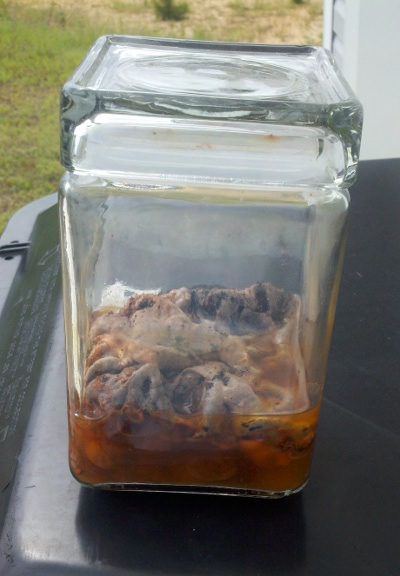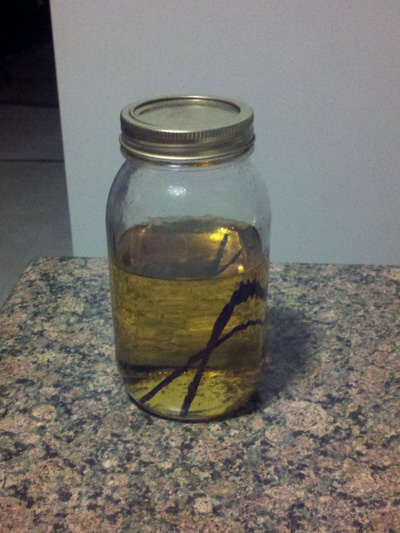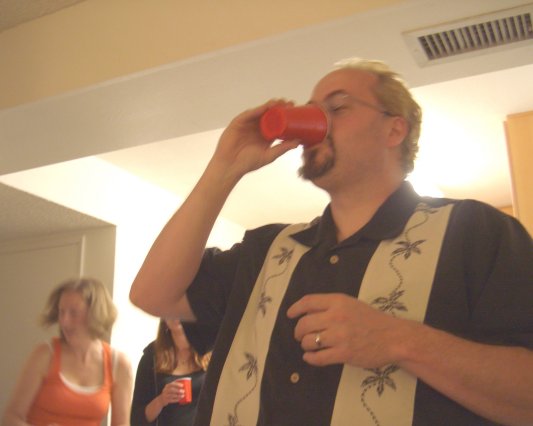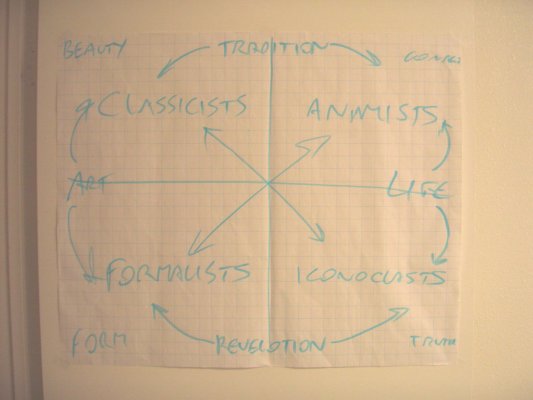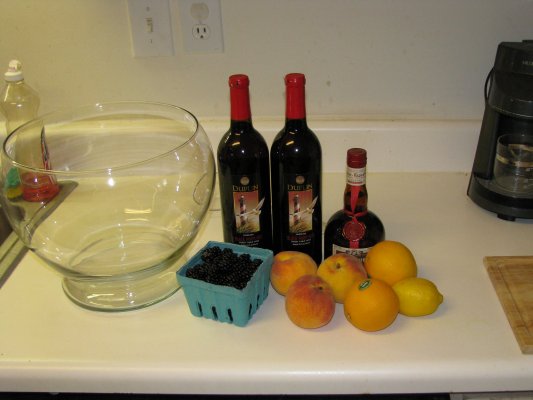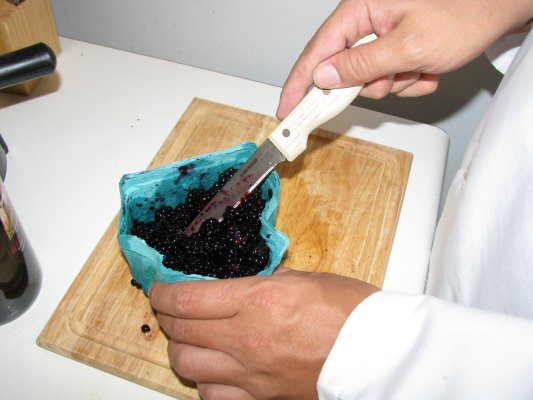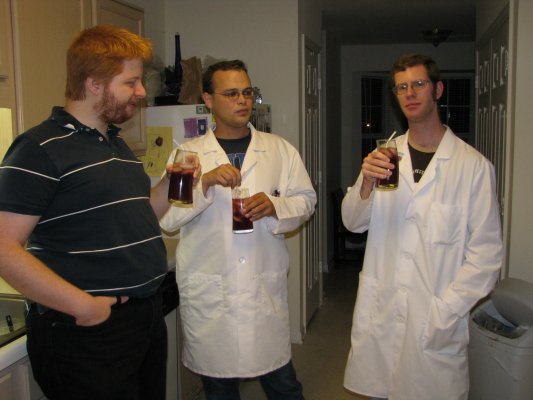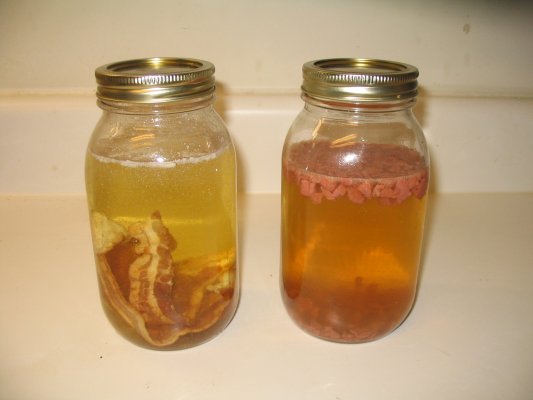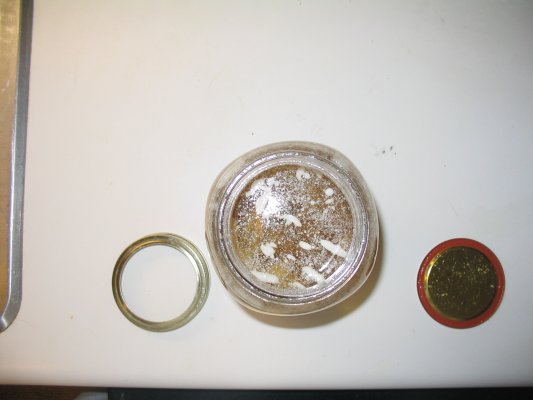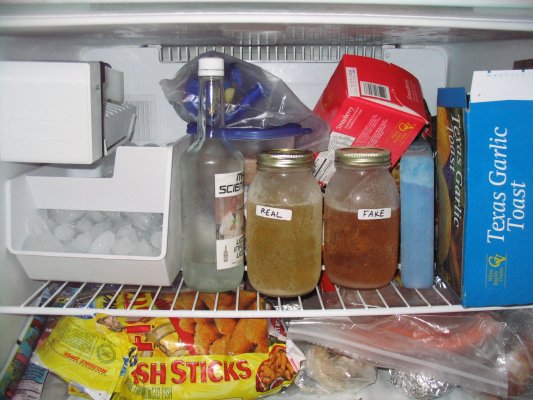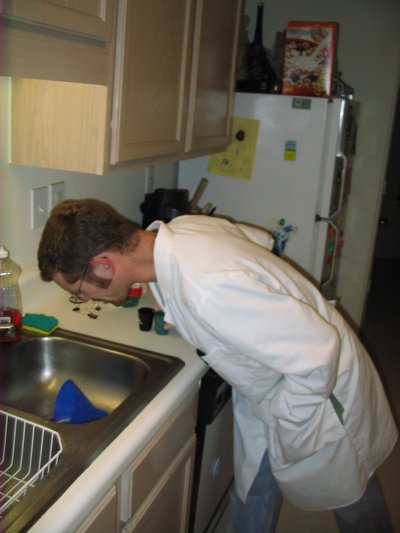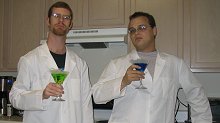Oh Lört They Comin'
![]() What's this? The Mad Scienticians, back in action, a dozen years after officially closing the book on Infusions of Grandeur? Yes, we have returned, but for one post only, as we felt our most recent experiment merits documentation (though perhaps not peer-review). Your humble scienticians, Brendan and Jenni, have seen many changes in our lives over the years. (More so for one of us than the other!) But we continue to embrace the spirit of adventure and scientific experimentation, and that has brought us to the matter at hand.
What's this? The Mad Scienticians, back in action, a dozen years after officially closing the book on Infusions of Grandeur? Yes, we have returned, but for one post only, as we felt our most recent experiment merits documentation (though perhaps not peer-review). Your humble scienticians, Brendan and Jenni, have seen many changes in our lives over the years. (More so for one of us than the other!) But we continue to embrace the spirit of adventure and scientific experimentation, and that has brought us to the matter at hand.
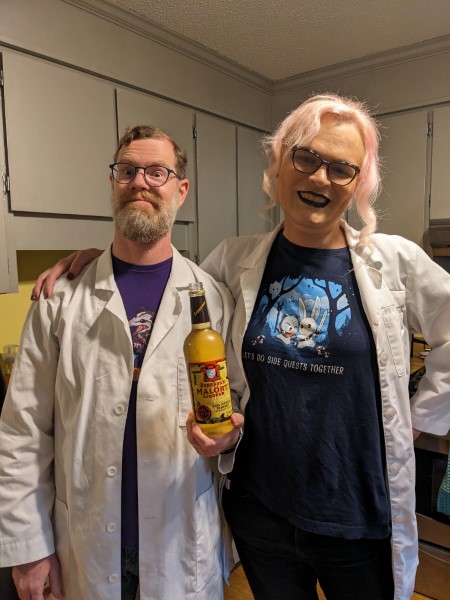
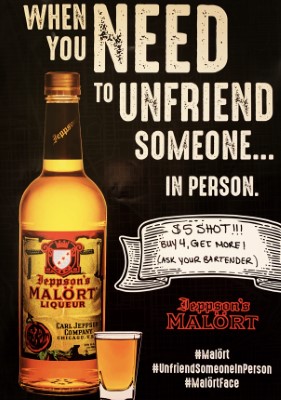 Though Jenni had never heard of it, I have long been curious about Jeppson's Malört, a bitter wormwood-based liqueur which is often called the worst in the world. Descended from Swedish bäsk, the liqueur is known for a flavor profile reminiscent of gasoline or pencil shavings. Malört has a cult following in the dive bars of Chicago, where visitors from out of town are often pranked into trying it, but surprisingly, it has never caught on much beyond the Windy City. The makers of Malört lean into its reputation, selling the drink as both a Chicago tradition and a way of "weeding out the weak." In the early 2010s, local comedian Sam Mechling began selling unlicensed merchandise that made fun of the product, with fake slogans such as "Jeppson's Malört: Tonight's the night you fight your dad." Rather than suing Mechling, the Jeppson Company decided to hire him and make him the face of their official marketing campaign.
Though Jenni had never heard of it, I have long been curious about Jeppson's Malört, a bitter wormwood-based liqueur which is often called the worst in the world. Descended from Swedish bäsk, the liqueur is known for a flavor profile reminiscent of gasoline or pencil shavings. Malört has a cult following in the dive bars of Chicago, where visitors from out of town are often pranked into trying it, but surprisingly, it has never caught on much beyond the Windy City. The makers of Malört lean into its reputation, selling the drink as both a Chicago tradition and a way of "weeding out the weak." In the early 2010s, local comedian Sam Mechling began selling unlicensed merchandise that made fun of the product, with fake slogans such as "Jeppson's Malört: Tonight's the night you fight your dad." Rather than suing Mechling, the Jeppson Company decided to hire him and make him the face of their official marketing campaign.
I think I first heard about Malört on an episode of "Wait Wait, Don't Tell Me," and have seen increasingly more references to it on the internet and in the culture, such as a billboard featured prominently over the Original Beef restaurant on the Hulu series "The Bear." I've long planned to try it next time I found myself Chicago. Much to my surprise, though, Chicago came to me: a few bottles showed up at my local ABC store in Raleigh, so I jumped at the chance to take one home. In a nod to tradition, though, I roped in an unsuspecting soul to try it with me - though I did have the heart to warn Jenni of Malört's reputation. After all, Jenni and I did make Peeps Vodka together, so I knew that she wouldn't be deterred. And so, four of us assembled to face this challenge: Jenni, her partner BB, my wife Lexie, and myself.
The two Mad Scienticians went first, sampling the Malört straight up and pondering all of the life choices that brought us to this point.
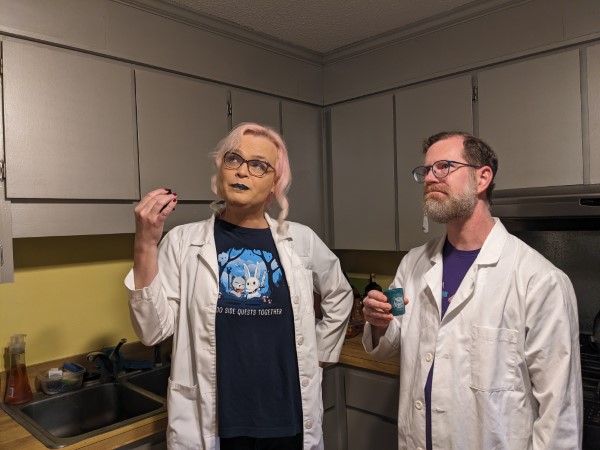
The drink is well known for producing the "Malört face," a wincing, horrified reaction in those trying it for the first time. I managed to get through it without pulling a face, but Jenni was not so lucky.
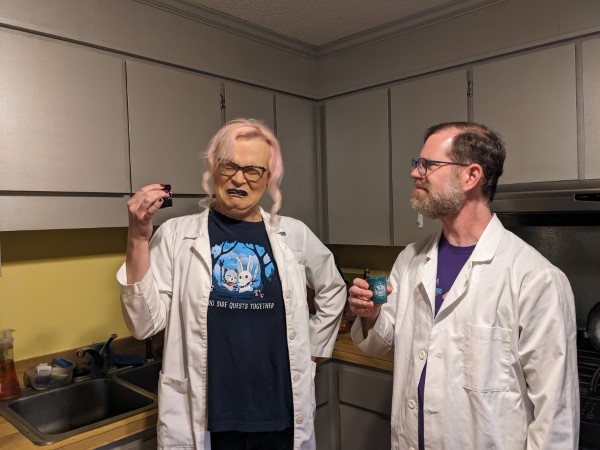
Next, it was Lexie and BB's turn to try.
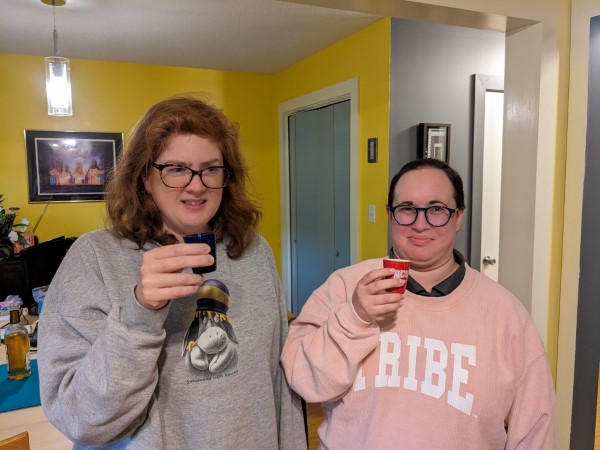
With all shots down, we remained at a 50% Malört-face rate, with Lexie the next to succumb.
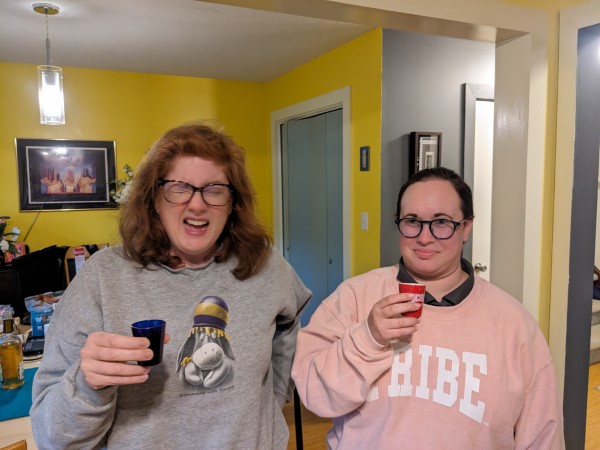
Comments were, overall, negative; but to widely varying degrees.
Lexie: "Like straight fertilizer in my mouth."
Brendan: "It's not that bad. It's kind of like if Campari was stronger and... not good."
Jenni: "There was no alcohol kick to it at all, it's just on the back end that it kicks your ass. Bad shit."
Lexie: "Yeah, I would make a worse face after shooting Jose Cuervo. But Jose Cuervo doesn't make me feel like maybe I licked under my car."
Of course, this was not the end of the experiment. In order to achieve success, we would need to test a hypothesis: could we make this stuff palatable?
To put this to the test, I did some research online and found this recipe, developed by Chicago bartender Brad Bolt:
The Hard Sell
Ingredients:
0.75 oz. Jeppson's Malört
0.75 oz. Gin
0.75 oz. St. Germain elderflower liqueur
0.75 oz. fresh lemon juice
0.25 oz. simple syrup
Twist of grapefruit peel
Combine ingredients in a shaker, fill with ice, and shake; strain into a cocktail glass. Garnish with twist of grapefruit peel or spritz of grapefruit oil.

We mixed this drink and split it four ways, so each of us had a few sips. We all found it surprisingly pleasant. The juniper and elderflower mask the harshness of the Malört, while its bitterness shifts the lemon juice in a more grapefruit direction. I liked it enough to mix another one for myself to get the full measure. By the end of the cocktail, the bitter flavor does build up enough for the Malört to come through more clearly than in the first few sips, but it's still well balanced with the other ingredients. If you don't like grapefruit juice, then this one will probably live up to its name; but if you do, then it's a rather enjoyable drink. I ended up rating it slightly lower than Jenni, but that may be because she got less than the full experience.
Jenni's score: 3.5 flasks out of 5
Brendan's score: 3 flasks out of 5
Overall score:


Having managed not to sabotage my friendship with Jenni and BB, we socialized for the rest of the evening, but drank no further Malört. But I wasn't quite ready to put a pin in this experiment. Over the next couple of evenings, I kept thinking of my initial comment about the Malört shot, where I compared it unfavorably to Campari. I had to wonder what a Negroni with Malört would taste like. The Negroni is my favorite cocktail, so bitterness is no impediment to me, and we had already found gin to be a good complement to Malört. Lexie, who shares my love of the Negroni, joined me in sampling the modified version. I began with a traditional equal-parts recipe, substituting Malört for the Campari.
Jeppson's Negroni
1 oz. Gin
1 oz. Jeppson's Malört
1 oz. Sweet Vermouth
Twist of lemon peel
Combine ingredients in a shaker with ice. Stir and strain over a large ice cube. Garnish with a twist of lemon peel or a spritz of lemon oil.
Traditionally, a Negroni is garnished with orange peel, but after the Hard Sell, I suspected that lemon would work better. I split the cocktail to test that hypothesis, adding a spritz of orange oil to one half and lemon oil to the other, and found that I was correct.
Unfortunately, the Malört remained front and center in this mix, with the lemon oil and other ingredients valiantly trying to hold it in check. The botanical flavors of the Malört are able to break through with the help of the gin, but ultimately that flavor is just far less complex and enjoyable than that of Campari. Lexie found this cocktail to be a more apt comparison to Chartreuse, another favorite of hers; but Chartreuse is sweeter and more complex as well.
Brendan's score: 2 flasks out of 5
Lexie's score: 2 flasks out of 5
Overall score:

In the spirit of absolute thoroughness, though, I wondered if we could improve on this result by splitting the difference. So, we moved on to a hybrid model.
Jeppari's Negroni
1 oz. Gin
0.5 oz. Jeppson's Malört
0.5 oz. Campari
1 oz. Sweet Vermouth
Twist of lemon peel
Combine ingredients in a shaker with ice. Stir and strain over a large ice cube. Garnish with a twist of lemon peel or a spritz of lemon oil.
The reintroduction of Campari vastly improved this drink, to the point that the Malört was mostly overpowered, but not entirely. The flavor was very near to a traditional Negroni, just slightly diminished, or as if made with old ingredients. If handed this drink, I would find it to be a perfectly serviceable Negroni, if not one of the better ones I've had. In the end, even though Lexie and I would both rate a good Negroni as a solid 5, and this tastes pretty similar - just a little off - we could only settle on a 3.5 for this mix. As it turns out, though, that achieves our goal of "splitting the difference" versus the 2 that we rated the full-Malört version. It seems like this drink should earn something a bit higher than that midpoint, but we just couldn't further justify ruining a perfectly good Negroni.
Brendan's score: 3.5 flasks out of 5
Lexie's score: 3.5 flasks out of 5
Overall score:

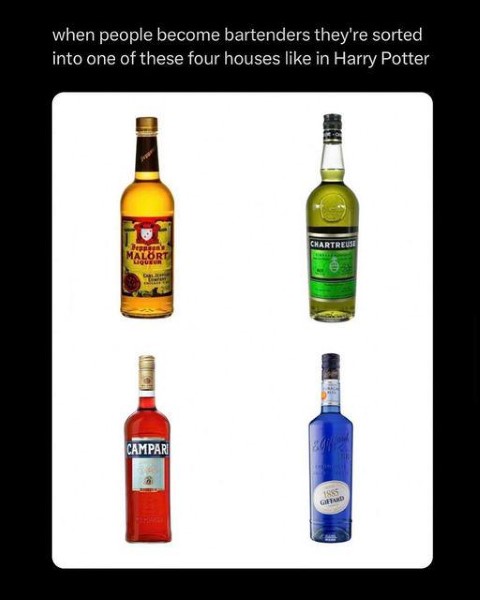
(Credit unknown)
